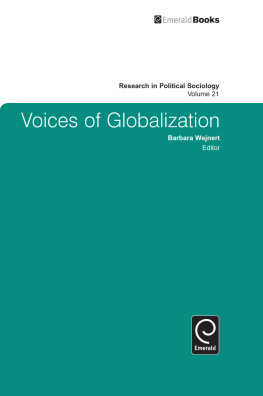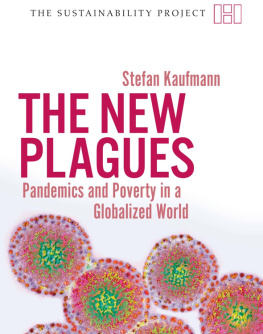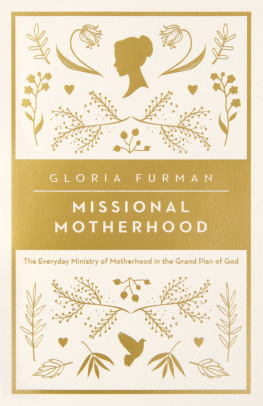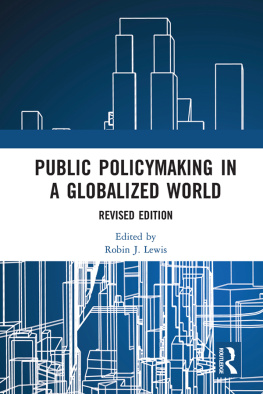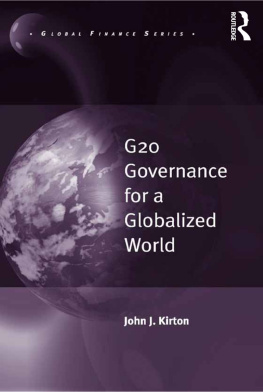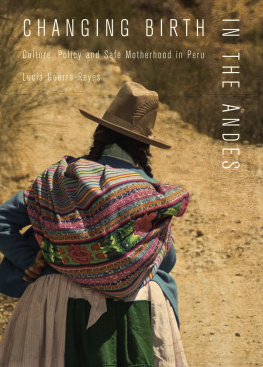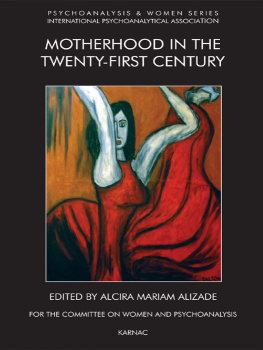
Safe Motherhood in a Globalized World
This book provides cutting edge information on safe motherhood in a global context. The chapters focus on research, program development and implementation, and policy dealing with various aspects of pregnancy, labor and delivery. Safe motherhood is a critical issue since healthy, safe motherhood is the prerequisite for a healthy, productive society. Writing about the situation in their countries, the authors are from Eastern Europe, America, Asia and Africa and are academic scholars and health practitioners. This book is multidisciplinary with scholars from sociology, gender studies, economics, social policy, social geography, population management and political science. Topics include lactation policy and misunderstandings of lactations in African countries and in the United States; postnatal stress disorder that is either understudied or not considered as a problem in many developing countries; potential causes of a decline of maternal health in democratizing states; the effect of geographical environment on reproductive health; and revelation of mysteries of consequences of pre-birth pain in the early life of children. Case studies provide examples of successful model programs. Solutions offered are based on utilizing available resources and technology in ways that maximize education and training of local health professionals and family members.
This book was published as a special issue of Marriage & Family Review.
Barbara Wejnert is Professor and Chair of the Department of Global Gender Studies at the University at Buffalo, SUNY.
Suzanne K. Steinmetz is Professor of Sociology at Indiana University-Purdue University - Indianapolis (IUPUI) and Editor of Marriage & Family Review.
Nirupama Prakash is Chief of the Women Studies & Societal Development Unit at Birla Institute in Pilani, India.
Safe Motherhood in a Globalized World
Edited by Barbara Wejnert, Suzanne K. Steinmetz and Nirupama Prakash
First published 2009 by Routledge
2 Park Square, Milton Park, Abingdon, Oxon, OX14 4RN
Simultaneously published in the USA and Canada
by Routledge
270 Madison Avenue, New York, NY 10016
Routledge is an imprint of the Taylor & Francis Group, an informa business
2009 Edited by Barbara Wejnert, Suzanne K. Steinmetz and Nirupama Prakash
Typeset in Times by Value Chain, India
Printed and bound in Great Britain by MPG Books Ltd, Bodmin, Cornwall
All rights reserved. No part of this book may be reprinted or reproduced or utilised in any form or by any electronic, mechanical, or other means, now known or hereafter invented, including photocopying and recording, or in any information storage or retrieval system, without permission in writing from the publishers.
British Library Cataloguing in Publication Data
A catalogue record for this book is available from the British Library
ISBN10: 0-415-48816-8
ISBN13: 978-0-415-48816-7
CONTENTS
Barbara Wejnert, Suzanne K. Steinmetz, and Nirupama Prakash
Barbara Wejnert
Santosh Vijaykumar
Andrea Parrot
Marieme Lo
Manasi Bhattacharjee, Suman Jain, and Rashmi Mathur
Sanjana R. Bhat
Elizabeth Daniel
Barbara Wejnert, Andrea Parrot, and Alma Djumabaeva
Tamar Dagargulia and Medo Badashvili
Bidya Bhattarai
Kathleen Cimasi and Barbara Wejnert
Anjana Maitra
Geeta Malhotra
Surekha Kishore
Ram Alagan and Seela Aladuwaka
CyprianWejnert
Nirupama Prakash
Suzanne K. Steinmetz
Katarzyna Zygadlewicz, a graduate of the State University of Fine Arts in Poznan in the faculty of Graphics Arts and Sculpture (1981), is one of the most known young Polish artists specializing in cycles of oil paintings. Her fascination with signs and symbols as well as Eastern Arts could be seen in cycles on paper and canvas, culminating in the experimentation with fabrics that led to the creation of a set of monumental flag-paintings (End of the Century - Meeting of Cultures). Hundreds of meters of fabric typed with signs and symbols were used as a base for the flag-paintings portraying unification of different cultures and religions, and have frequently been presented in Poland and abroad. The idea of using art as a medium for cultural unification was later pursued in subsequent actions undertaken by Polish politicians. As the Polish journalist, Grazyna Banaszkiewicz, explained: Katarzyna Zygadlewicz is strong but sensible and open for madness, also in terms of art. Her canvas shows the heat of vigorous lines, brushes, spatulas or hands, since she lays paint in all these manners during her creating expression. She is not afraid of the extent of the canvas, nor density or saturation of the paint. Since the 1980s Zygadlewicz successfully presented her art in numerous exhibitions in her native Poland and in other countries including Morocco, Sweden, Germany, Spain, Italy and the USA.

Barbara Wejnert
Suzanne K. Steinmetz
Nirupama Prakash
INTRODUCTION
This collection, edited by Barbara Wejnert, Suzanne Steinmetz, and Nirupama Prakash, examines safe motherhood in a globalized world. The collection is divided into four parts. The first part contains eight articles and examines the impact of globalization on safe motherhood. The second part presents four articles on case studies, the third part, consisting of six articles, examines strategies and policies needed from the practitioners view and the fourth part discusses program and policy recommendations.
The issue of safe motherhood is interconnected with all aspects of human life, with individual abilities and capacities to develop physically, psychologically and intellectually. Womens health is necessary for social and economic growth not only to reduce gender disparities, but also because mothers health cannot be separated from the health of children throughout their lives. This article provides the foundation for an examination of a variety of macro-level factors that impact womens health in general as well as how it affects motherhood. The first section, Concept of Maternal Health in Relation to Globalization, reviews the effects of global democracy, strategic messaging, cultural influences on lactation, publicprivate partnerships for improving maternal health, consequences of pain in early life, and prenatal care.
CONCEPTUALIZATION OF MATERNAL HEALTH ISSUES
The Millennium Development Goals provide a shared vision of a much improved world by 2015, where extreme poverty is cut in half, child and maternal mortality is greatly reduced, gender disparities in primary and secondary education are eliminated, women are more empowered, and health and environmental indicators are improved. The last few years have seen a change in the concept of development that now encompasses health, social, political, technological, economic, and human growth and not merely economic growth. In the midst of all the spectacular progress in development, we are faced with many conflicts and challenges that need to be addressed.
Only minimal efforts have been made to directly integrate health concerns as a priority into development processes. The interface between health, technology, and wider society can play a pivotal role in enhancing the quality of life of all people. The relationship between health and development has undergone renewed scrutiny. There is an ongoing search for new models to deal with global threats, soaring medical costs, technological costs, gender disparity, poverty, and disease. Technological innovations offer unique opportunities for partnerships between health and development sectors to change the pattern of work and enhance health-promoting habits.





